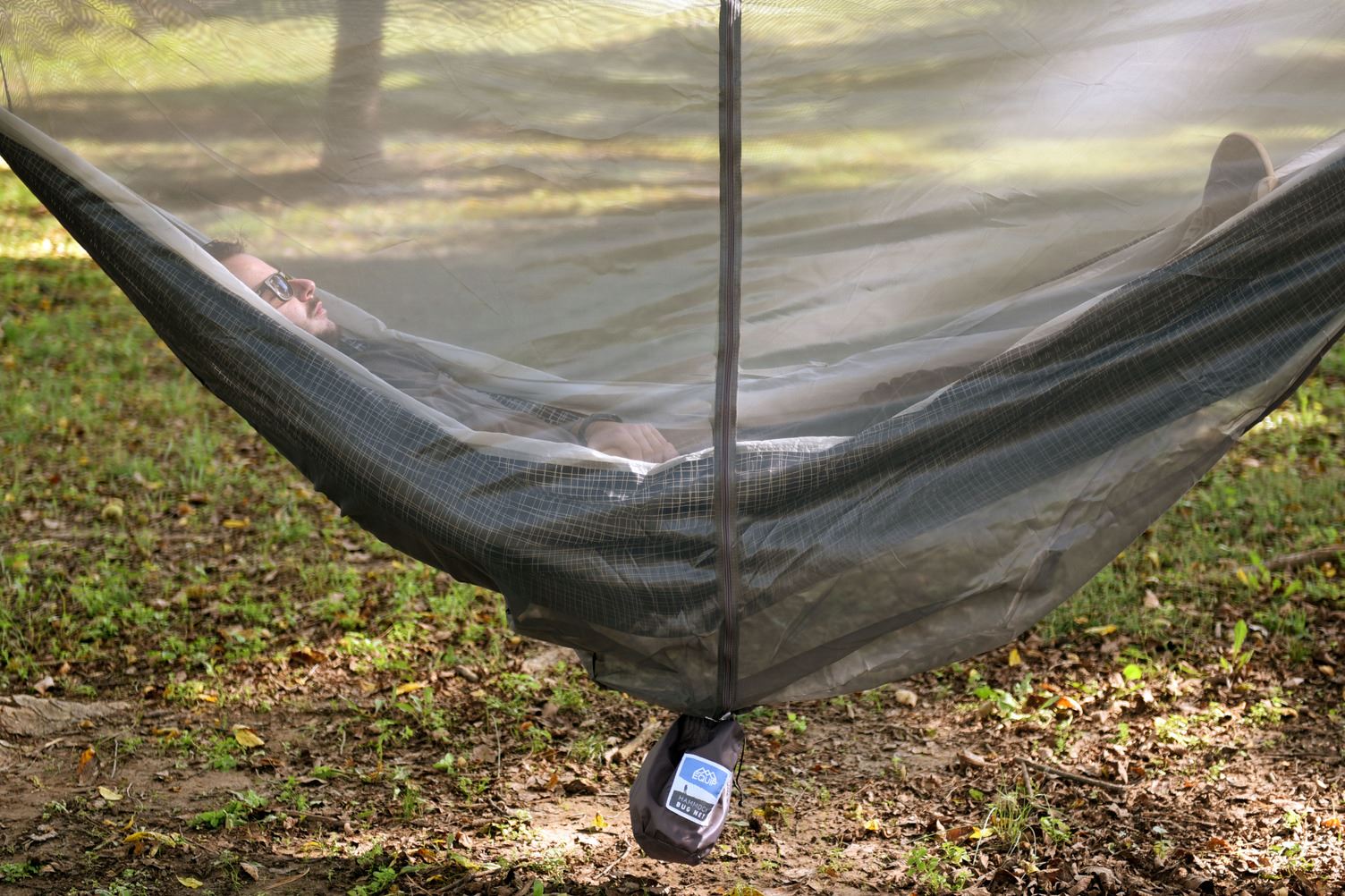
Campers and backpackers have relied on tents as their nightly shelter for years. The basic camping hammock, on the other hand, is an enticing alternative—and one that is becoming increasingly popular. If you've ever enjoyed lounging in a hammock, it might be time to try camping in one. We'll address the question "what is hammock camping?" and discuss what you'll need to set up your camping hammocks in this article.
How to choose a camping hammock:
Camping hammocks simply entails ditching your tent in favour of a hammock and a few useful items, allowing you to sleep peacefully outside overnight. Hammocks are popular among travellers and bikers since they are lightweight and take up little room in a pack. Hammock campers also get a better view and avoid the discomfort of sleeping on slanted or rocky ground. All you need are a couple of robust trees.
What you'll need to hang a camping hammock:
You can make your own camping (or backpacking) arrangement by adding components to your existing hammock, or buy a prepackaged "hammock tent" kit that includes most of the equipment listed below:
- If you don't already have one, get one.
- A tree-friendly suspension system with wide (tree-friendly) straps
- A sleeping mat or an insulated underquilt (you can also use a second sleeping bag to line the under side of your hammock)
- a tarp for rain
- Netting to keep the bugs out or use a camping hammock that has one already built in.
Camping Hammocks and Hammock Accessories are available for purchase here:
It's possible to do without the rain tarp, bug netting, and/or underquilt, but it's nice to have these on hand just in case. Also, even though these (and other) accessories are commonly compatible with multiple hammock brands and models, if you're putting up your own camping hammocks, double-check compatibility.
Here's some more information:
Your camping hammock: Any camping hammock can serve as the focal point of your camping setup. If you're buying one, the most important element to consider is comfort, though weight will be a problem if you'll be hiking. Beyond the conventional sling, there are a variety of unique designs to choose from. For comparison, try lying down in a few.
Suspension system: Because bare ropes can cause tree bark damage, a good suspension system (usually sold separately from the hammock) with wide straps is required. Setup is also a breeze with strap systems because no specific knots are required. It's worth noting that certain hammock tent systems come with thick ropes with protective sleeves to preserve the tree bark. When you lie down on the underside of your lofty sleeping bag, whether in a tent or a camping hammock, it compresses and loses its insulation qualities. The solution in a tent is to use an inflatable or foam sleeping mat. A camping hammock sleeping mat can also be used, albeit it may not fit perfectly into the design of the hammock.
To assist stabilise your pad, you can purchase an accessory sleeve. Another option is to slightly deflate an air pad to help it adhere better to the contour of your hammock. Some people cut a closed-cell foam pad to match their needs, which is affordable, effective, and wind resistant.
A rain tarp with a camping hammock:
Rain tarp (or rainfly): The hammock equivalent of a rainfly for a tent, this is typically mounted over a ridgeline that you tie between the trees above your hammock. If you're not buying one built expressly for camping hammocks, make sure the type you purchase has enough attachment points so you can secure the tarp in the location you want it.
A camping hammock with a bug net built in:
Bug net: Many bug nets for hammocking will fit over the entire hammock, while others will simply fit over the top. If you only have a top-only nett, your sleeping bag and pad will provide some bug protection underneath, but you should also treat the bottom of the hammock with a fabric-safe insecticide like permethrin.
How to hang a Camping Hammock:
Following a few easy criteria is all it takes to be a proper camping hammock:
1. Select a suitable location for your camping hammock to be set up. That includes checking with land management to discover if camping hammocks are permitted and, if so, what the rules are. It also entails adhering to Leave No Trace guidelines when tent camping, such as setting up 200 feet or more from a water source and always using an established campsite.
2. Take care of your trees. Choose trees that are healthy and robust (6 inches in diameter or more for most trees) and use straps that are at least 0.75 inch wide (1.5 inches wide is even better, and a few parks mandate 2-inch-wide straps). Other anchor points, such as strong structural features on a vehicle or a structure, are also an option. Make sure the trees you chose don't have any signs of nests or other animals living in them.
3. Make use of your geometry knowledge. A camping hammock that is too flat or too bent won't be comfortable for most individuals. The straps should be angled up at about a 30-degree angle towards the tree for the best results. The camping hammock's lowest point should be no more than 18 inches off the ground.
How to Make a Bug and Rain Shelter for Your Hammock:
A ridgeline is a line that goes above the camping hammock and is used to suspend a tarp. The line can also be used to hang items such as a pocket organiser. Bring a piece of cord that is longer than your camping hammock and long enough to secure around both of your camping hammock's anchor points. (A ridgeline may be present in some camping hammock systems.) Using the same anchor points, attach the cord above your camping hammock. When wind-driven rain is a possibility, a lower ridgeline height is preferable. Some individuals prefer to raise the ridgeline high enough so they may stand up under their rain tarp in calm weather.
How to Set Up an Ultralight Tarp Shelter:
Secure your rain tarp: Varied kinds of hammock tarps have different details, but the basic method entails keeping tension at the spots where the tarp touches the ridgeline and staking it out around the tarp's perimeter.
Attach your bug net: The details will vary based on your bug net's design. Many variants attach to one end of your camping hammock strap, after which you unclip the camping hammock and slide the nett over it. Secure the net to the camping hammock strap on the other end after it is fully extended. The next step is to add another ridgeline to the top of the nett using a series of loops. The camping hammock is normally accessed by a zippered opening in the net's midpoint.
Is hammock camping comfortable?
Lying slightly off-kilter is a good idea. If you cant tilt your body 10 to 15 degrees away from the centerline, the fabric beneath you will flatten out and you won't feel as if the camping hammock is eating you. Find the correct pillow: Many individuals find that the camping hammock's lip works well as a headrest. If that doesn't work for you, try filling a small camping pillow or stuff sack with a puffy jacket instead. For the most part, large pillows don't work for most individuals. Keep your essentials in your hammock: You can keep a little stuff sack inside your hammock with you to store your bedtime requirements. Another alternative is to store items in a gear sling accessory that hangs below your hammock and is within arm's reach (inside your bug net). It's worth noting that the area beneath your hammock doubles as a tent's vestibule, providing additional covered storage for heavier goods like boots or your bag. It will definitely take a couple of goes to get used to sleeping in this way, but super worth it when you get it right, as it means you can head further into forests or camp comfortably in the mountains.


.png)
Leave a comment